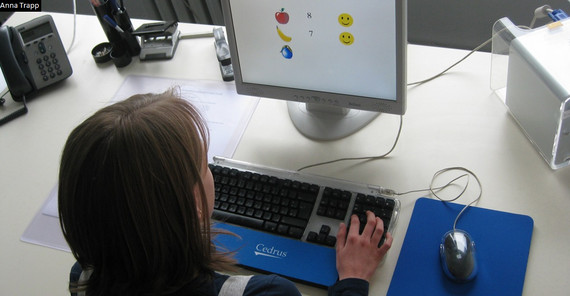Working memory is the intermediate storage device for the human brain. Its capacity is limited, even more so for people with learning disabilities such as dyslexia. Psychologist Katrin Göthe has performed experimental research on what exactly limits this type of memory.
“Remember this series of numbers, and then repeat them from memory,” Katrin Göthe says: 4, 7, 3, 1, 9. That’s easy. “Now subtract 4 from the last number and use the result to replace the last digit. Can you repeat the entire series?”
Katrin Göthe, an academic researcher in the Department of Cognitive Psychology, has to use some serious verbiage to explain the research project that she has just finished: “Process dissociations from working memory functions in cognitive performance disorders.”
The brainteaser above just serves to illustrate the difference between short-term and working memory. Short-term memory is sufficient to simply note the series of numbers. If however in the second part the brain has to retain information, process additional information, and then block out all irrelevant input, working memory is brought to bear. Without working memory, a reader would not be able to recall how a sentence began. Working memory, however, only has a limited capacity. For some people it is higher, and for some it is lower.
There are differing hypotheses about what causes these differences. A theoretical model developed at the University of Potsdam suggests that working memory capacity is limited by interference. This means that bodies of information that have already been processed and stored are mutually disruptive, and this interference effect is stronger when the pieces of information are more similar. The model distinguishes between two mechanisms: If for example someone must remember several words, two of which sound very similar, then the two words are either completely mixed up, or there is what is called a feature transference in which a word partially deletes another word that contains the same vowel.
Experiments with adults have already proved the model’s efficacy. “In my project, I tested whether this could be applied to children with dyslexia,” says Göthe. Children with dyslexia are of normal intelligence; research has shown, however, that they have slightly impaired function in their working memory. According to the model, this means that they have more interference. This may explain why they lag behind their age cohort in reading and writing performance.
In various experiments, Göthe asked 60 children of different ages and with and without dyslexia to complete two memory update tasks. One of them serves to test their verbal working memory. The children looked at a monitor and saw a basket with apples, bananas, and plums. They were asked how many fruits of each type were in the basket after a specific number were added or removed. The second task focused on the visual-spatial part of working memory. The subjects were asked first to mark the position of a mouse and a cat on a grid with nine boxes, and then to note their position after the children had moved the animals around in their head several times.
The researcher then measured the proportion of correct answers in relation to presentation time and compared this data with the data derived from the theoretical model. The results for the verbal area have not been evaluated yet, but the findings for the spatial area demonstrate that the interference model definitely affects children. As expected, the model more strongly predicts the interference mechanism of interference in children with dyslexia than among other non-dyslexic children of their age. For feature transference, however, the precise opposite was the case. “We haven’t found a comprehensive explanation for that yet,” says Göthe. “We have partially confirmed the result of earlier studies in the spatial area with other interference conditions. Now we are waiting on the results for the verbal tasks.”
Text: Sabine Sütterlin, Online-Editing: Agnes Bressa, Translation: Susanne Voigt

